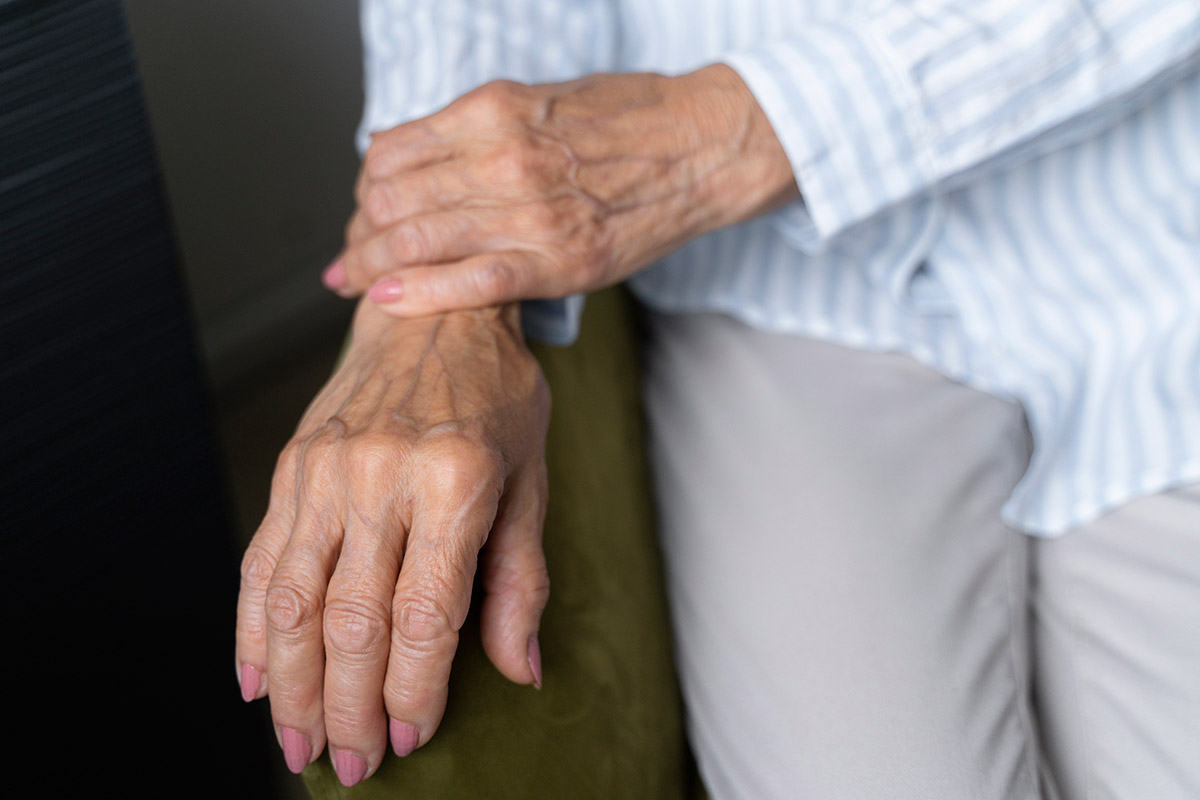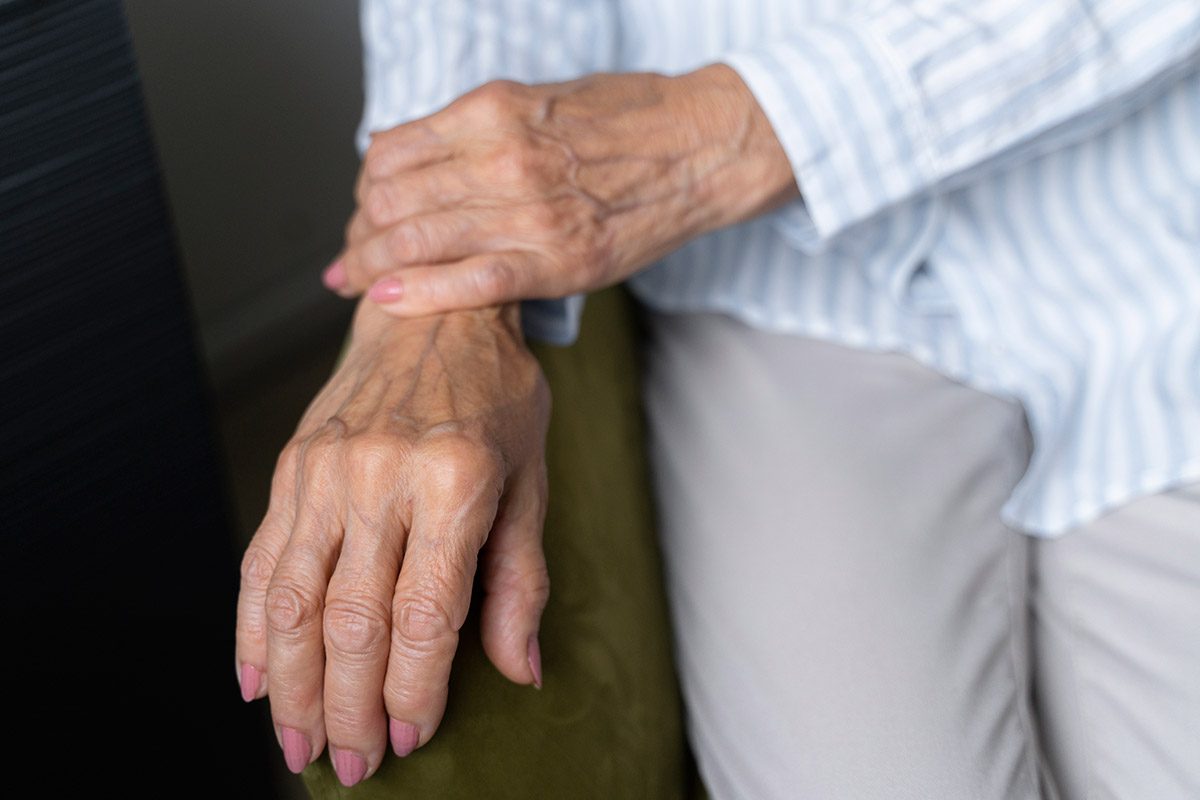
Table of Contents
- What is Joint Hypermobility Syndrome?
- Joint Hypermobility and Arthritis
- What Causes Joint Pain?
- Physical Therapy for Joint Hypermobility
- Home Exercises For Joint Hypermobility Syndrome
- Living Life to its Fullest
Joint hypermobility syndrome (JHS) can be painful, especially after vigorous activity, but regular activity can cause issues, too. Any medical condition called a syndrome means more than one symptom is present. JHS may be painful at times, but other symptoms include poor balance, bruising and frequent strains. Managing joint hypermobility syndrome first focuses on protecting the joints to reduce the risk and severity of symptoms and managing the symptoms when they occur.
What is Joint Hypermobility Syndrome?
Joint hypermobility syndrome, or hypermobility spectrum disorder, is a hereditary condition that affects upper and lower body joints and exhibits various symptoms. Hereditary means the condition has genetic factors and is passed onto offspring. Joints have flexibility beyond the normal range. The excessive joint range of motion can be due to poor muscle tone around a joint or the shape or depth of the joint socket.
When there are no symptoms other than one or more loose joints, it is called benign joint hypermobility. Adding the word “syndrome” to joint hypermobility indicates a set of symptoms are occurring. Joint hypermobility syndrome symptoms can be highly variable, so no two cases are identical. People with JHS may experience any of the following.
- Joint stiffness and pain
- Frequently dislocating joints
- Frequently experiencing sprains and strains
- Poor balance
- Gait issues
- Clicking joints
- Bruising
- Dizziness
- Stretchy skin
- Stomach pain
- Bladder and bowel problems
The symptoms may occur when you do everyday activities that would not cause issues for people without joint hypermobility. Pain can range from mild to severe.
Joint Hypermobility and Arthritis
Joint hypermobility and arthritis are related in that excessive joint flexibility causes joint instability in upper and lower body joints. The joints do not wear normally, which may mean cartilage wears out sooner. Another reason arthritis can develop is when one or more joints are frequently dislocated, damaging joint tissue. Numerous studies have found that joint hypermobility may lead to osteoarthritis, but the absolute connection cannot be determined without more research.
It has also been found that people are diagnosed with arthritis when the real issue is joint hypermobility. This is because the symptoms of joint hypermobility are highly variable, and some of the symptoms are similar, i.e., joint pain.
Early diagnosis of hypermobility is important to avoid misdiagnosis of inflammatory arthritis. A correct diagnosis is needed to develop the right treatment plan.
Sometimes, joint hypermobility syndrome develops because of a medical condition, especially one involving weakened collagen, which can mean fragile connective tissues, like ligaments and skin. For example, Ehlers-Danlos Syndrome (EDS) is inherited and affects connective tissue. One of the symptoms is joint hypermobility. There are 13 EDS connective tissue disorders, including joint hypermobility, tissue fragility and skin hyperextensibility.
This shows how complex the diagnosis and treatment of joint hypermobility syndrome can be.
What Causes Joint Pain?
Joint hypermobility is likely underdiagnosed since, in the past, pain was often attributed to arthritis. There is more awareness today that pain could be due to JHS. No biomarkers can be identified at this point, so the Beighton Scoring system is used in conjunction with a physical exam. The Beighton screening system is a nine-point scale that measures performance in various joint maneuvers. It tests fingers, elbows, wrists, knees and spine flexibility, the joints most commonly affected.
JHS pain can be due to joint overuse, dislocations, muscle or tendon tears, muscle spasms and a joint subjected to an excessive range of motion. Joint inflammation can develop, or a nerve is damaged, which causes pain. People with joint hypermobility syndrome tend to have the inability to judge the position of their joints (poor proprioception), so overextend them.
The relationship between joint hypermobility and pain is recognized, but it is challenging to identify when joint hypermobility is causing the pain. Symptoms vary so much, making it challenging to identify the cause-and-effect.
Physical Therapy for Joint Hypermobility
Exercise or physical therapy for joint hypermobility aims to improve joint stability, muscle tone and ligaments and tendon strength. Your doctor may recommend physical therapy for hypermobility because the therapist will use a variety of techniques to help you manage the symptoms and can teach you how to do home exercises properly.
Physical therapy for joint hypermobility syndrome pain relief may include a blend of the following treatments.
- Muscle strengthening exercises that improve endurance
- Manual therapy like joint mobilization and massage
- Balance and coordination exercises that address your everyday lifestyle, i.e., work requirements, sports participation, lifestyle activities, etc.
- Abdominal strengthening exercises because joint hypermobility can lead to loose pelvic muscles (one reason the symptoms include stomach, bladder and bowel issues)
- Biomechanics and posture adjustment for stabilization improvement
The physical therapist can also suggest behavior modification approaches to minimize the occurrences of joint hypermobility pain. For example, learning the safest range of motion for the hypermobile joints can help you become more aware of what you should and should not do to avoid injury.
Home Exercises For Joint Hypermobility Syndrome
It is also essential to do regular home exercises for joint hypermobility syndrome, even if getting physical therapy. The home exercises supplement the physical therapy, so you get the most benefits, including strengthening muscles and improving coordination. Following is a sample of the typically recommended exercises.
- Squats for the hips and thigh muscles
- Planks to strengthen the back and abdomen
- Straight leg lift while lying on your back with the other leg bent at the knee
- Sideways leg lifts
- Buttocks lift while lying on the floor
- Upper trunk lifts while lying face down
- Wall push-ups
- High knee lifts
- Shoulder blade squeeze
- Hand strength ball isometrics
You want to do resistance, posture, stability and muscle-strengthening exercises. It is important to do regular exercise too. Your doctor or physical therapist will help you establish a schedule to follow.

Also, any joint condition can benefit from maintaining a healthy weight and following a balanced diet that supplies necessary nutrients. You may also benefit from wearing a joint support item, like an elastic bandage, especially during strenuous activities.
Living Life to its Fullest
The best way to live life to the fullest when you have joint hypermobility syndrome is to follow your doctor’s advice. Much research is still needed on joint hypermobility. The primary treatment is exercise and learning to know what you should not do to reduce the risk of hyperextending your affected joints and causing injury.
Sources
- https://www.ncbi.nlm.nih.gov/pmc/articles/PMC6460832/
- https://www.amjmed.com/article/S0002-9343(17)30220-6/fulltext
- https://www.ncbi.nlm.nih.gov/pmc/articles/PMC3761653/
- https://www.ehlers-danlos.com/what-is-eds/
- https://www.sciencedirect.com/science/article/abs/pii/S0025712519300781?via%3Dihub
- https://www.ncbi.nlm.nih.gov/pmc/articles/PMC7250515/
- https://pubmed.ncbi.nlm.nih.gov/25684143/This leads to an increased risk of joint injuries.
- https://www.ncbi.nlm.nih.gov/pmc/articles/PMC10457547/
